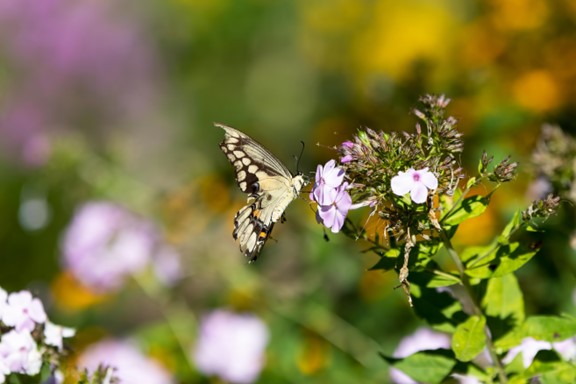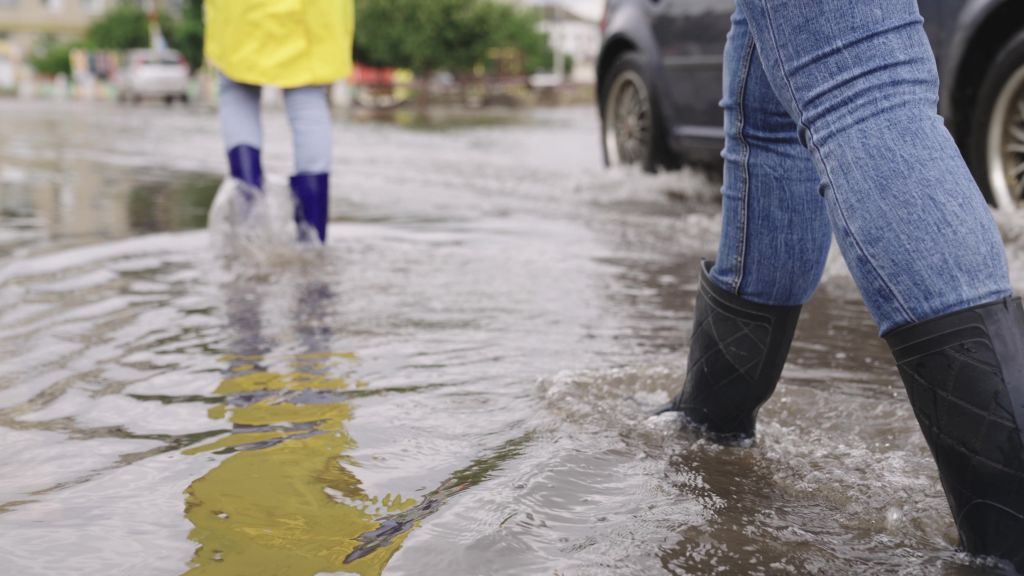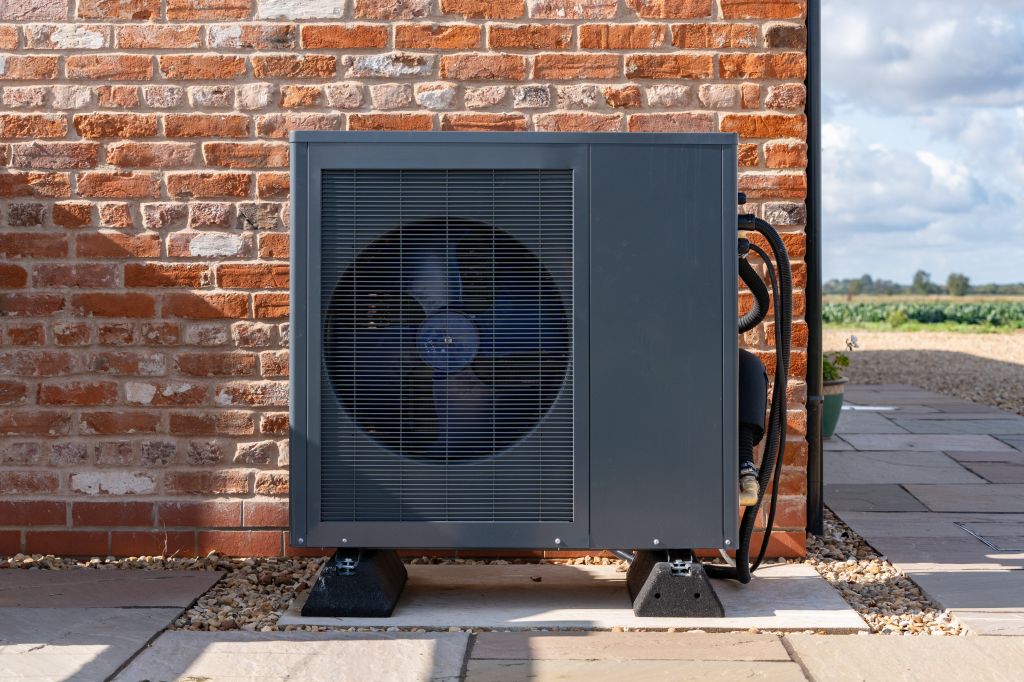Published March 27, 2024 • 6 Min Read
For Canadians eager to enjoy backyard living again, the arrival of spring signals the start of gardening season. When it comes designing and caring for our outdoor spaces, we can make decisions that have a positive impact on the environment, like helping to increase biodiversity, provide for pollinators, absorb greenhouse gases, and grow fresh produce to eat.
As climate change affects growing seasons and contributes towards more extreme weather events, you might be feeling the challenge of growing a successful garden this year. In this article, we’ll share some tips and advice on how you could adapt to this year’s growing season.
Ways to save water in your garden
Water is not an endlessly flowing resource, so finding ways to use less water as you maintain your garden can help to reduce stress on our water systems, as well as making your garden more climate-resilient.
1. Consider using a drip irrigation system
When it comes to watering large areas, drip irrigation systems are great for getting water straight to the soil, while water from traditional sprinklers can evaporate before it hits the ground.
2. Schedule your watering times
Whatever your chosen watering system, consider setting up a timer to schedule when your lawn gets a soaking. For lawn maintenance, most benefit from a deep watering in the morning, less than once per week, when there is no rainfall.
3. Use rain barrels for gardens
Rain barrels collect rainwater at the end of downspouts that you can use later with a soaker hose or watering can. Using rainwater for gardens and containers can help to limit the strain on your region’s water supply. Minimizing your use of potable water in the yard means you’re not wasting resources that have been used to pump, filter, and treat drinkable water.
Shop with Avion Rewards: Get up to 10% back on gardening supplies at RONA. Learn more
4. Reduce your green lawn space
Growing green grass uses a lot of water, not to mention the work and resources needed for cutting, fertilizing and, occasionally, using pesticides. It’s possible to save time and water by maintaining a smaller lawn space.
There are simple ways to reduce your grassy area such as adding a path, expanding a garden, covering a section of your lawn with mulch.
Plant for pollinators and biodiversity
Providing for pollinators could be part of every gardener’s job description. Three-fourths of the world’s flowering plants and about 35 percent of the world’s food crops depend on pollinators. In Canada, the most common pollinators are bees, helped by a variety of species including butterflies, moths, hummingbirds, and bats.
Unfortunately, pollinators are struggling to adapt to the impacts of climate change and habitat loss. As the annual growing season becomes increasingly less predictable, pollinators can’t always find the plants they need to survive at the right time, not to mention that fewer natural spaces available for them to thrive.
By planting with pollinators in mind, we can help rebuild their homes in our gardens. Native plants are familiar to pollinators and important to the health of a region’s natural habitat. And because native plants have evolved naturally in that region, they provide the best habitat for pollinators and local species, and require less water or fertilizer than non-native species.
Here are a few ideas for getting started:
1. Remember that you can start small
There’s no need to remove every non-native plant and start anew. Start small by adding a few native plants to containers or garden beds, integrating them into your garden. The native plants you select will depend on where you live, so it’s best to consult your local garden centre for guidance on what to grow.
2. Plant in clusters
Plant several native species together in one or more clusters. This creates a target for pollinators to easily find what they’re looking for.
3. Plan a continuous bloom of flowers
Select native plants that bloom at different times through the growing season from spring to summer to fall. This continuous bloom helps pollinators keep busy and the ecosystem healthy.
4.Grow a variety of plants
Variety helps create biodiversity in your garden, attracting more insects, birds and other wildlife that make up the natural habitat. When choosing plants, make sure to include vibrant colours to attract pollinators.
5. Plant a native tree
Trees have many benefits that last for generations, like storing carbon dioxide, which helps to reduce the impact of climate change. Trees and shrubs can reduce air, noise, and water pollution, and a well-situated tree can even shrink your energy bills by shading your home in the summer.
Trees have an important role in ecosystems, too. They support biodiversity by providing food and shelter for animals and insects. Did you know trees contribute to the ecosystem even after they die? Dead wood provides nesting for pollinators and critters. So you needn’t be in a rush to remove old stumps and branches from your yard: You can plant on or around them to add structure to your garden and provide a home that buzzes with insect action.
Don’t have space to plant a tree in your garden? Consider donating Avion Rewards points to Tree Canada to support rural and urban tree planting from coast to coast.
Grow your own produce
If you’ve bitten into a tomato straight from the vine or plucked a raspberry from your backyard bush, you know how tasty homegrown produce can be.
Here are some environmental benefits to starting vegetable garden at home, or joining an allotment garden:
1. A shorter distance from field to plate
Making a salad with vegetables transported from your yard to the kitchen by foot is an easy way to reduce the greenhouse gas emissions that come with delivering produce by air or truck to your grocery store.
2. Minimize plastic and food waste
When you harvest your own produce, you can skip the single-use plastic packaging of store-bought goods. While you’ll have to wash and chop your own pickings, you don’t have to take more than you need from your garden, cutting back on prep time and food waste.
3. They provide organic produce from your backyard
When you grow your own produce, you can say no to pesticides which can impede biodiversity and harm ecosystems.
This article is intended as general information only and is not to be relied upon as constituting legal, financial or other professional advice. A professional advisor should be consulted regarding your specific situation. Information presented is believed to be factual and up-to-date but we do not guarantee its accuracy and it should not be regarded as a complete analysis of the subjects discussed. All expressions of opinion reflect the judgment of the authors as of the date of publication and are subject to change. No endorsement of any third parties or their advice, opinions, information, products or services is expressly given or implied by Royal Bank of Canada or any of its affiliates.
Share This Article






